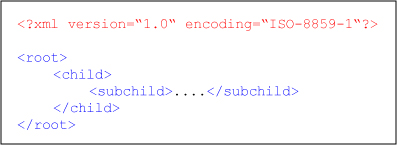XML - Summery
Data Storage
There exist several data storage methods and we presented you four of them. Depending on the type and the amount of data that has to be stored, the best storage method has to be found:
- Small datasets: Plain Text Files or XML
- Huge datasets: database
- Images and terrain models: binary files
Not only the amount of data but also the structure of given data define the decision for a storage type:
- Text Files: simple structure
- Binary Files: fixed structure
- XML: simple - complex structure
- Database: simple - complex structure
XML
| XML is an open standard to structure, store and send information. It allows the author to define their own tags and their own document structure. XML is not to display data but to describe data and to focus on what data is. If you compare XML to HTML we can say, that HTML is used to display data and XML is used to carry and describe data. |  XML XML |
The main purpose of XML is to facilitate the sharing of data across different systems, particularly systems connected via the Internet. An XML document can therefore be transmitted and interpreted between applications and organizations.
![]()
In the majority of cases you do not have to create an XML file by your own, but the XML file is produced automatically by a computer program e.g. by exporting a document as XML file. Nevertheless you should be able to interpret the content of an XML file, even if it has been created automatically. This is the reason why we introduced XML in this lesson. And be aware that there are cases in which you have to create XML files by your own. By now you should know the XML syntax.
DTD and XML Schema
DTD and XML Schema contain the rules that specify the structure for particular XML documents. The structure is defined with elements, attributes, and notations. DTD and XML Schema establish constraints for how each element, attribute, and notation may be used within the particular documents.